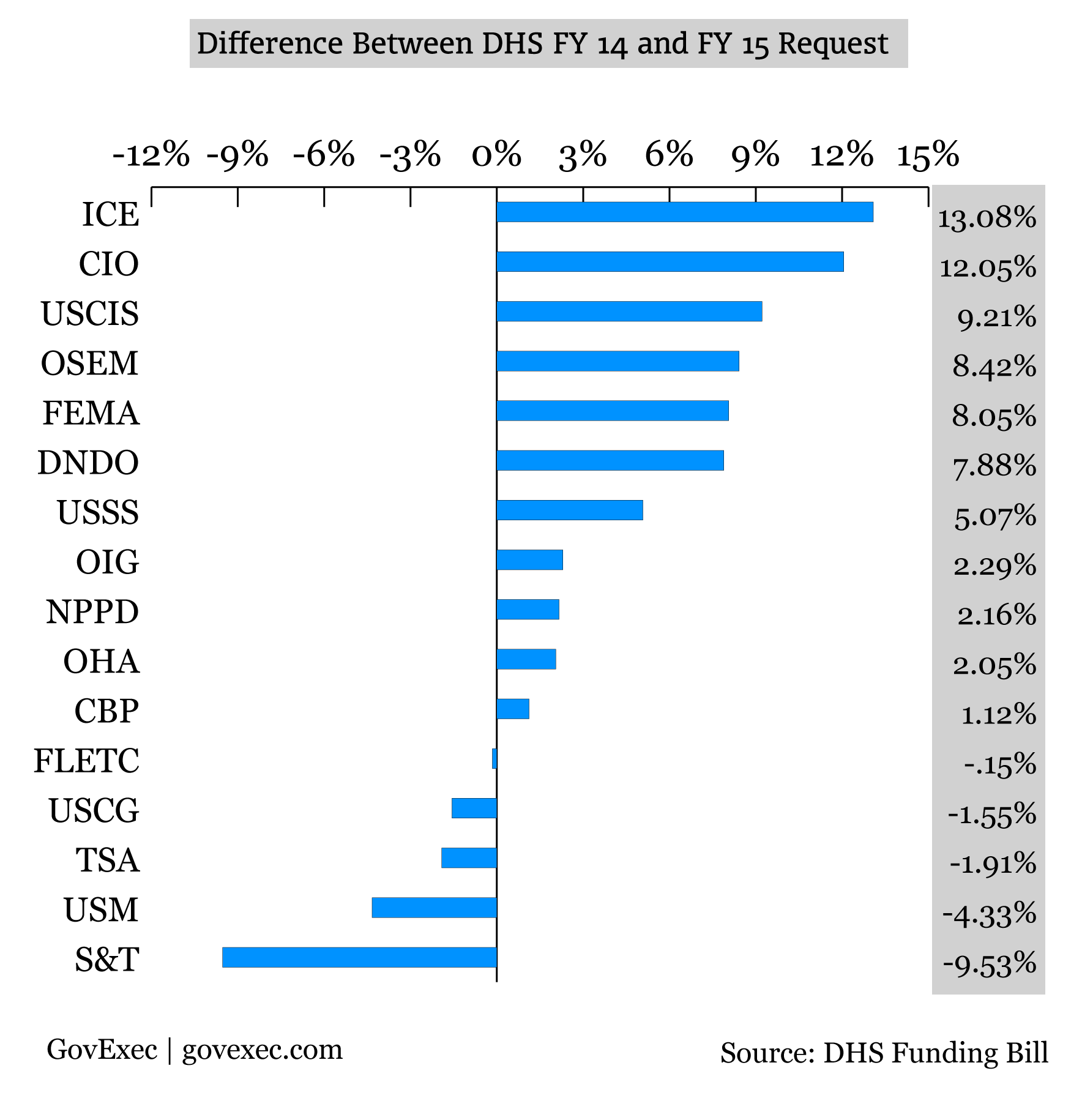
U.S. Customs and Border Protection officer Alexander Rodriguez examines a go-kart at a warehouse Thursday, Feb. 19, 2015, in Carson, Calif. Jae C. Hong/AP
Boats, Biometrics and Other Items in the Homeland Security Funding Bill
Congress just authorized $750 million for the Department of Homeland Security's cybersecurity operations and approved a new biometrics program for border agents.
The impasse has ended. The Homeland Security Department is not shutting down.
What does that mean for the department and its 225,000 employees? For starters, 30,000 workers will not be forced to take unpaid furloughs next week, and the remaining employees will not have to report to work without pay. Additionally, the uncertainty created by a continuing resolution is removed, allowing DHS management to start new projects, sign new contracts and plan for the future.
Senate Appropriations Committee ranking member Barbara Mikulski, D-Md., said the measure will allow all DHS components to carry on with their missions.
“This bill will provide DHS the funds needed to protect our homeland and meet the needs of our national programs, such as the Coast Guard, Border Patrol, Customs, Secret Service and the Transportation Security Administration,” Mikulski said. “But protection and response begins in local communities, which is why we put money into the federal checkbook for grants that go out to our local police, firefighters and [emergency medical services] to buy the equipment and get the training they need to keep our communities safe.”
Here are some of the major policy initiatives supported by the new funding bill:
- The funding measure realigns millions of dollars to follow through on DHS Secretary Jeh Johnson’s “unity of effort” initiative. The program, supported by President Obama in his most recent budget blueprint, is attempting to bring DHS components together to act more cohesively.
- The bill provides more than half a billion dollars to deal with undocumented children attempting to cross the southern border. The funds provide for deterrence efforts, caring for the children and transporting them. Lawmakers encouraged DHS to coordinate its efforts with other federal agencies.
- Congress appropriated funds for several hiring initiatives. Overall, lawmakers want DHS to hasten the hiring process. They asked for a report from DHS on its strategy to get new employees in place more quickly. The funding measure provides $62 million to Immigration and Customs Enforcement to hire additional agents and support staff for domestic investigations such as human trafficking and drug smuggling. The bill includes an additional $12 million for the fugitive operations division to hire enough employees to get back to fiscal 2013 levels. Lawmakers also instructed DHS to employ at least 21,370 Border Patrol agents. They said BP is currently “well below” that level and should take “all possible steps” to hire more agents. TSA, meanwhile, received a staffing cap. Under the new measure, the agency cannot employ more than 45,000 individuals.
- Congress provided DHS with funding to acquire new technologies. The measure includes more than $750 million for cybersecurity operations. The Coast Guard received money to buy new boats and aircraft. Customs and Border Protection is funded to test a “biometric exit mobile application” and to maintain at least 95,000 operational flight hours for border surveillance.
- The measure includes $48.6 million for DHS to move to a new headquarters, though the White House recently altered its plans for the relocation.
At the component level, ICE received the largest funding bump from fiscal 2014, with Congress appropriating a 13 percent increase for the remainder of the year. ICE received 16 percent more than the Obama administration asked for in the president’s budget proposal. The Transportation Security Administration was given slightly less money this year than in fiscal 2014, but 11 percent more than Obama’s request. The Science and Technology Directorate received the biggest drop off in funding, seeing a 10 percent decrease in appropriations in fiscal 2015.
This chart shows the total funding for each DHS component, compared to their respective proposals in Obama’s budget.

And this one shows the winners and losers from fiscal 2015 compared to fiscal 2014.

Kedar Pavgi contributed to this report.
